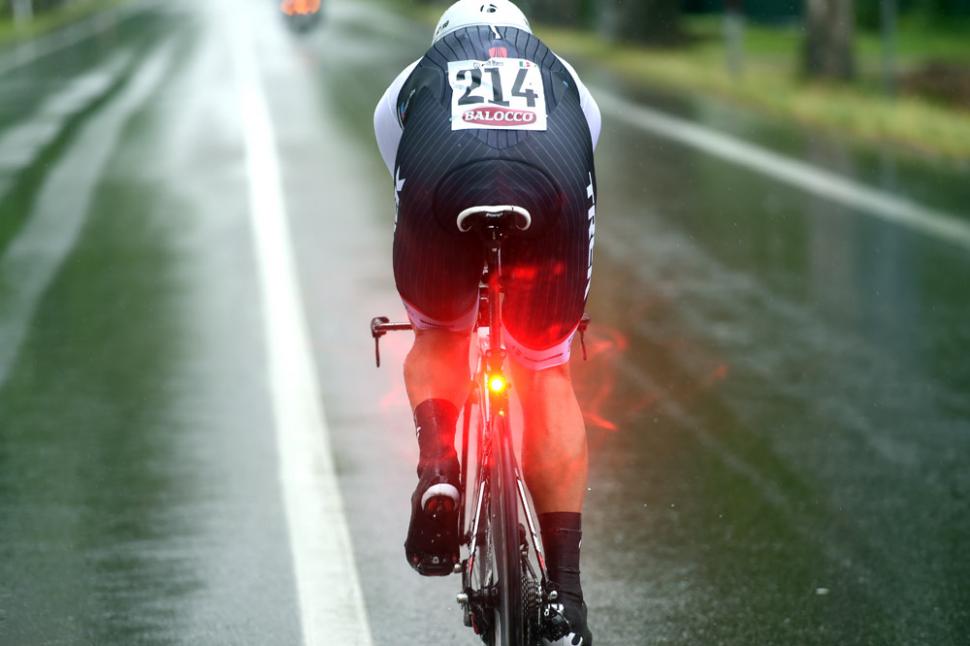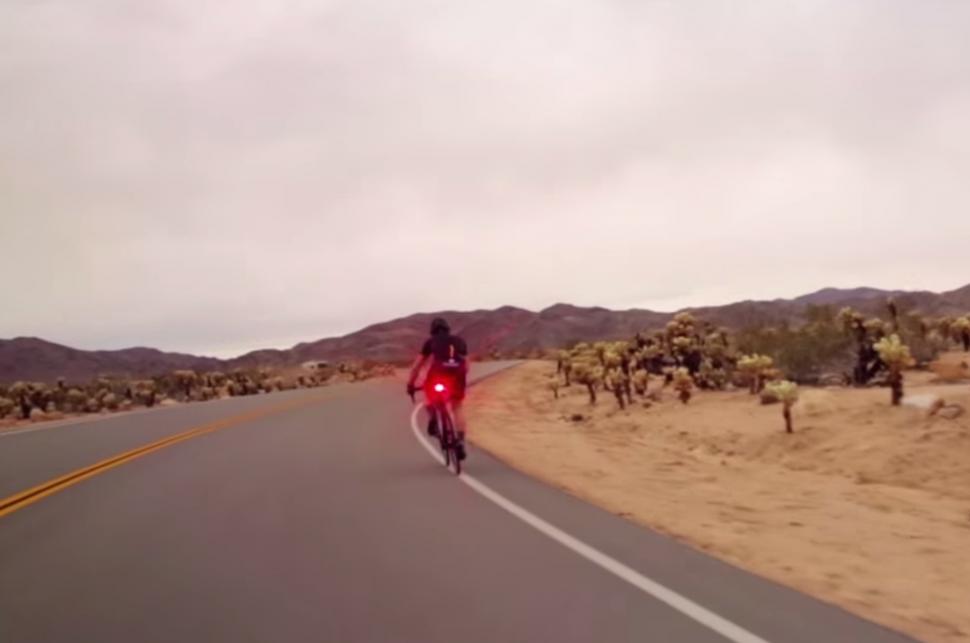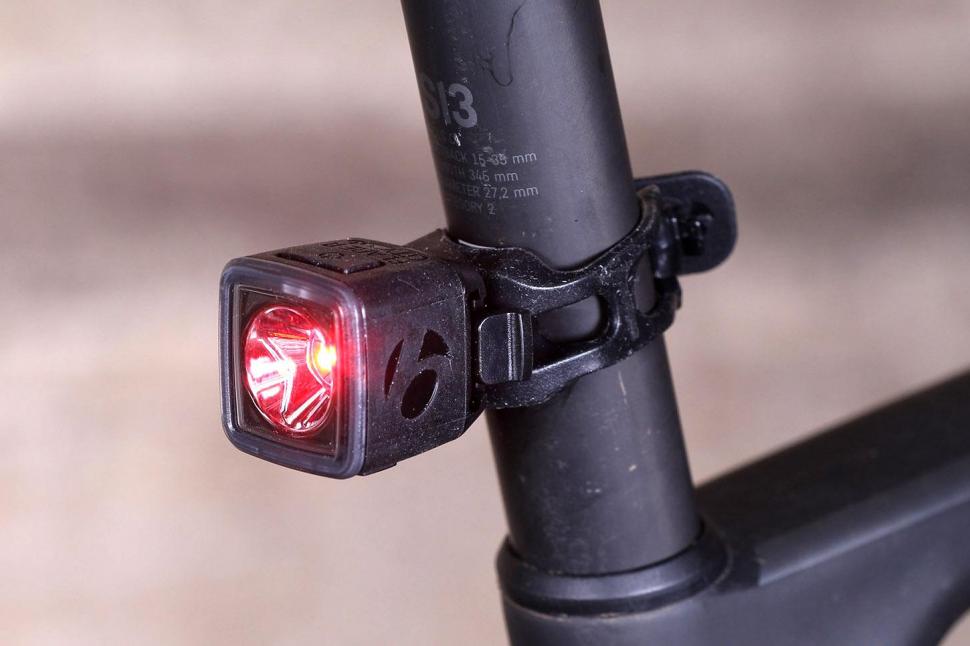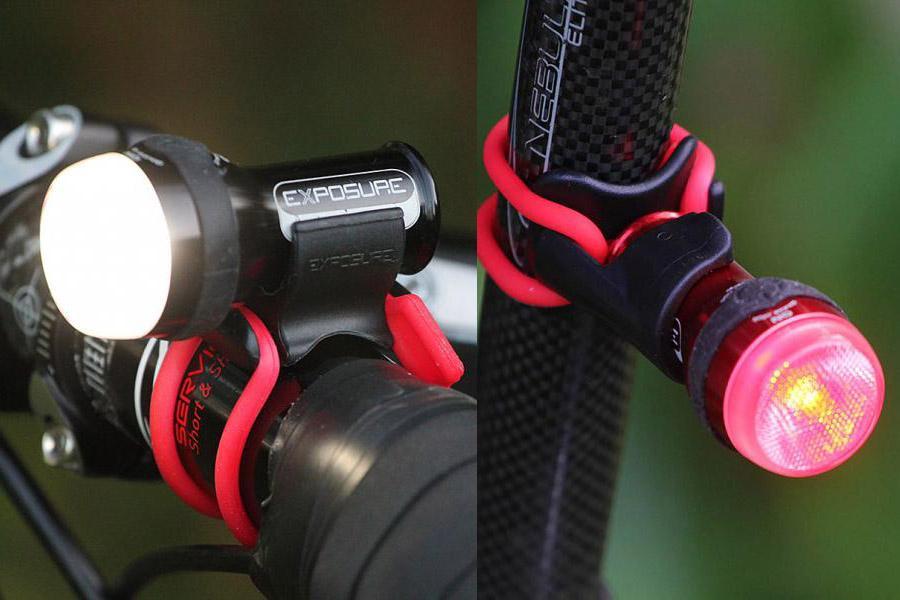- News
- Reviews
- Bikes
- Accessories
- Accessories - misc
- Computer mounts
- Bags
- Bar ends
- Bike bags & cases
- Bottle cages
- Bottles
- Cameras
- Car racks
- Child seats
- Computers
- Glasses
- GPS units
- Helmets
- Lights - front
- Lights - rear
- Lights - sets
- Locks
- Mirrors
- Mudguards
- Racks
- Pumps & CO2 inflators
- Puncture kits
- Reflectives
- Smart watches
- Stands and racks
- Trailers
- Clothing
- Components
- Bar tape & grips
- Bottom brackets
- Brake & gear cables
- Brake & STI levers
- Brake pads & spares
- Brakes
- Cassettes & freewheels
- Chains
- Chainsets & chainrings
- Derailleurs - front
- Derailleurs - rear
- Forks
- Gear levers & shifters
- Groupsets
- Handlebars & extensions
- Headsets
- Hubs
- Inner tubes
- Pedals
- Quick releases & skewers
- Saddles
- Seatposts
- Stems
- Wheels
- Tyres
- Health, fitness and nutrition
- Tools and workshop
- Miscellaneous
- Buyers Guides
- Features
- Forum
- Recommends
- Podcast
feature
 Bontrager Flare Trek Factory Racing
Bontrager Flare Trek Factory RacingAre daytime bike lights a safety essential? Should you get daytime lights?
This article was originally published in August 2015
Should we ride with a rear light on during the daytime? Or perhaps we should go further and ride with both front and rear lights on even when the sun is shining?
We had a forum topic about this issue on road.cc a couple of years ago and what you might call a heated debate when Bontrager announced its Flare R rear light, designed specifically for daytime visibility, earlier in the year.
The reason we’re thinking about it again is that we went to visit Trek last week and the brand is really keen to promote the use of rear lights during the day. It even had the members of Trek Factory Racing ride the prologue of this year’s Tour de France on time trial bikes fitted with the Flare R “to promote awareness of the most important cycling accessory available today”.
Of course, your cynical side thinks that Trek wants to encourage the use of lights in the daytime because Bontrager, it’s sub-brand, produces that Flare R rear light. It’s simply a way of boosting sales.
Trek acknowledges that, of course, it has an interest in selling lights, but says that the key motivation for launching the Flare R was to keep cyclists safe.
“About two years ago, I was in San Diego, and I’m driving along during the day, and I see a biker, a road cyclist, and he’s got a blinking light on the back of his bike, and I thought, ‘That is a great idea,’” says Trek President John Burke. “The only problem is you could barely see his light.
“When I got back to Trek, I put together a team of engineers, and I said, ‘Listen, what I’d really like to see is a light on the back of a bike that can be seen during the day.’ If we could do that, I think it would significantly enhance the safety of cyclists everywhere.”
The result is the Flare R. Here’s John Burke’s short video presentation on the light.
Trek argues that using a light during the day makes sense because that’s when about 80% of cycling accidents occur.
Well, yeah, says your cynical side, but what percentage of cycling takes place during the day? Maybe that figure simply reflects the number of people on bikes during the daytime compared to the number who ride at night.
Trek also argues that, “Studies on accidents resulting in the fatality of a cyclist show that in 40% of all bicycle vs. car accidents, the victim was struck from behind.”
That statistic is from the US. Put a light on the back of your bike, the argument goes, and you’re less likely to be one of them.
“We think products like the Flare R allow a rider to have more control over their safety, putting us in both offensive and defensive positions on the road,” said Trek’s Chris Garrison. “We want to get people talking about increasing their visibility not just at night, but also during the day.”
Chris cites a recent AA-Populous poll as evidence that more cyclist visibility is required. In that poll 91% of drivers said that it’s sometimes hard to see cyclists while driving.
John Sullivan, an RAF pilot and keen cyclist, advised in his paper A Fighter Pilot’s Guide to Surviving on the Roads, “Aviation research shows that contrast is the single most important factor in determining the likelihood of acquiring an object visually – this is why military aircraft camouflage is designed to tone down their contrast.
"On the ground, dark coloured vehicles or clothing will result in reduced contrast against most usual backgrounds, and this is why high visibility clothing (for pedestrians, cyclists and motorcyclists) and/or bright lights are so important, in the daytime as well as at night.”
Back at Trek, John Burke says, “People should be able to see you all the time. And when they do, you’re going to have a better riding experience. Get a new Flare R, or buy something else. What I care about is making sure you have a really safe cycling season.”
Of course, Trek didn’t invent riding with a rear light on during daylight. Some people have always done it and USE, for example, has been advocating it for years. The British lights brand says that its Exposure Flash front light and Flare rear light (yes, the same name as the Bontrager light) are designed specifically for both daytime and nighttime use (you could argue that USE, like Trek, has a vested interest in promoting more bike light use).
Our man Dave says, “I’ve used the Flare R rear light a lot and I’d say it makes a noticeable difference to the passes you get. Drivers tend to give you more space.”
Of course, that’s anecdotal evidence. If anyone knows of any scientific research that has been carried out, we’d be interested in hearing about it.
So, why do so few of us use lights during the daytime? We guess that most people don’t think it’s necessary, although some oppose the idea in principle.
“When a vehicle has lights on it makes any in front or behind without harder to see,” said Simon E in that road.cc thread mentioned earlier. “Every vehicle that runs with sidelights/LEDs/DRLs [daytime running lights] in the daytime is furthering the idea that you have to have lights on to be seen, so all the sheeple do the same. Baaaa! This means drivers to look only for lights, not other vehicles or people.
“Lights are NOT needed in daylight, whether on bikes, motorbikes or cars.”
In a comment under our story announcing the launch of the Flare R, McVittees said, “Whilst it is perfectly reasonable to want to run as bright a rear light as possible either during the day to warn cars or at night when riding on unlit country roads, I hate being stuck behind someone who is running a high output rear light at night during my urban commute. I find it distracting and obscures my vision of the road (and thus traffic) ahead.”
andyp said, “[Bontrager are] pouring money into something which will make them more money, not into solving a problem.”
What do you reckon? Do Trek’s arguments convince you that you should use a rear light during the day? Let us know what you think.
Mat has been in cycling media since 1996, on titles including BikeRadar, Total Bike, Total Mountain Bike, What Mountain Bike and Mountain Biking UK, and he has been editor of 220 Triathlon and Cycling Plus. Mat has been road.cc technical editor for over a decade, testing bikes, fettling the latest kit, and trying out the most up-to-the-minute clothing. We send him off around the world to get all the news from launches and shows too. He has won his category in Ironman UK 70.3 and finished on the podium in both marathons he has run. Mat is a Cambridge graduate who did a post-grad in magazine journalism, and he is a winner of the Cycling Media Award for Specialist Online Writer. Now over 50, he's riding road and gravel bikes most days for fun and fitness rather than training for competitions.
Latest Comments
- lonpfrb 1 sec ago
Depends if you're a Cosmologist working in light-years or a civilian working in terrestrial units..
- don simon fbpe 5 min 20 sec ago
And? Your neck don't work?
- lonpfrb 11 min 49 sec ago
No, that's very doubtful while proper testing would be fully destructive.
- TheBillder 58 min 29 sec ago
In that £1000 exactly scenario, beginners should probably be made aware that pedals will be extra.
- don simon fbpe 1 hour 26 min ago
What's wrong with dropping down on to the Millenium Bridge, or the swing bridge, then the brief, but satisfying climb back up the hill? #training....
- chrisonabike 2 hours 7 min ago
The relatives might of course disagree, but in general I'd countenance a relatively light sentence* if only we could fix it so that those who...
- ktache 2 hours 46 min ago
Id forgotten that I got a second hand set of project two's for my getting to work bike over twenty years back.
- Veganpotter 3 hours 43 min ago
My bet is that all these tires popping off are from people with bad pressure gauges or they're simply just putting too much air in on purpose. ...
- chrisonabike 4 hours 59 min ago
David9694 - you were right! These new autonomous vehicles really are conspiring to run out of control!...



Add new comment
212 comments
YES! It makes a noticable difference. I ride mainly rural and semi-rural roads and the biggest change in driver behaviour was at junctions - you know the typical "I didn't see you mate" senario. That's the flashing front light, the rear light is less decisive. I'd say the the AVERAGE passing distance increased, but it also increased punishment passes
Do road riders in the US get hit less than those in countries which don't see people running lights in the daytime?
I'm all for anything that keeps cyclists safe but I'm struggling with that one.
Helmets are proven to save lives, rear lights aren't.
Even if scientifically unproven, there is at least a small chance that a rear light will make you more visible, therefore less likely to be hit. Even if the chance of an accident is only reduced by 5%, surely it is worth it to prevent serious injury? Only downsides being a cost of about £30 and a tiny weight penalty.
Don't understand those who think that they shouldn't have use lights in the daytime. Rain, spray, low sun, reflective sun on wet roads, moving from shady to bright areas?
The two are not mutually exclusive. Your second sentence suggests you understand this.
In really bright sunlight - not even a flashing light is visible.
If there's low sun around - I'm looking for a safer route.
Short murky days, Scotland? Yes, we have those.
hello mr anecdote, despite increases in DRLs there has been no decrease in incidents, but what we do have is blame being pushed onto innocent parties, even the police accusing people on bikes of not having bright enough lights despite meeting the requirements written in the regulations.
Continue bowing to pressure and flawed thinking and the burden will always be pushed onto the vulnerable, maybe if the police were to blame rape victims for wearing certain clothing at certain time of day/night then this might hit home but the reality is forcing people to have DRLs, hi-vis and helmets is exactly the same thing as telling women not to wear alluring clothing or to not go out at night.
And when the incident rate remains the same where will we go as a vulnerable road user, buy a vehicle with a hard shell, roll cage, brighter lights that make it impossible for others to see just as with most modern motorvehicles, well done, you just fell into the trap!
DRL's are at the front of cars - the main fear cyclists have is being struck from behind - that's where a bright flashing red light is effective,night and day.
Civilised behaviour is on the decrease,in line with the deterioration with the discipline of children; I'm ex-Army and discipline is the number one requirement in ensuring consistent and predictable behaviour in people.
There is also a proven but small risk of target fixation.
So would you rather be visible and the target or invisible and not seen?
Or would you rather suffer punishment passes where the driver did see you but didn't give a f***?
I can see lights can help, not sure they are a panacea, and I would argue more needs to be done about drivers who can see and do see but don't give enough room because they don't give a f***
I am not advocating that everyone runs with daytime lights but I am intrigued by your priorities.
Just so that I have this straight...
What you are saying is that if you are bashed from the rear by a vehicle you'll be so protected by the helmet that it wasn't worth bothering being more visible to possibly avoid being bashed?
I'm not being rude but that is taking superstition too far.
Helmets have much more limited benefits than you are giving them credit for. So I would say that you have your priorities backwards. It's far far better to avoid being hit by a vehicle in the first place than it is to wear protective gear that even the manufacturers will tell you provides only minor head protection. It's not only your head that's in danger.
Use lights or don't that's up to you but relying on your helmet to take the sting out of a vehicle impact as if it has magical powers against what we muggles call the laws of physics is well....voodoo.
Cyclists are not required to wear hi-vis clothing or use lights during the day,so they can't be blamed if struck from behind - you are free to be pedantic and wear all black clothing but please don't criticise others that choose to use a modicum of self preservation in making themselves as visible as possible to other road users.
Hi Jazzdude, Trek isn't a publicly traded company. It's a family-owned business.
By this logic a flashing light will invariably result in a change of contrast which is something the human visual system is rather good at picking up.
Interesting concept, but only relevant to bikes when the background is a light sky
After many years riding my motorcycle with lights on I have taken this on board when cycling to some degree using my rear light on a regular basis.
I would like to think drivers should be perfect but there not and I value my life.
Yes, I use lights all the time on road.
They weigh hardly anything, I don't need to worry about being caught out by bad weather etc as the lights are already there. They run on rechargeable batteries and last a week of commuting or a weekend of longer rides.
They're very useful in summer along sunlight dappled country lanes, they really stand out.
I urge everyone to react against this shameful piece of advertorialising by Trek by going out and getting a See Sense or Exposure FLARE instead................
There's EU studies to back up a net reduction in accidents on motor vehicles
http://ec.europa.eu/transport/road_safety/vehicles/doc/consultations/drl...
I run a flasher on the back all the time. Despite the argument that drivers should do the "right" thing, I'll take anything I can to make dying less likely.
There's been some (Danish, paywalled) research suggesting that DRLs lead to about a 50% reduction in bad crashes: http://dx.doi.org/10.1016/j.aap.2012.07.006
It's not ironclad, but it's (ahem) way better methodology than any helmet research I've ever heard.
I ended up with hub driven DRLs, and put them on my kid's bikes. I ended up there not because of victim-blaming, as much but because removing the switch removed a point of both human and mechanical failure, and if I build mine like I build theirs, no arguments about kids vs grownups.
However, and this gets to awareness-test issues and poorly-trained drivers, it seems (anecdotally, not data at all) like I have had many fewer unpleasant interactions with drivers since turning on the DRLs. My pet theory is that a whole lot of driver irritation and bad behavior is caused by their "surprise" at cyclists "darting" (i.e., suddenly materializing where eyes were looking but brain was not) into the road, and DRLs do a lot to reduce that surprise. Note that some light manufacturers are *finally* using a minor flicker rather than an eye-popping flash to attract attention, and that is a very good thing. Hub driven DRLs with a good-sized cap on them will flicker at low speeds, but steady bright once you are moving (note -- mine are home-made, hence cheaper, also much more water-tolerant than the $$$ ones).
In terms of vs. helmets, I think DRLs are somewhat different:
(1) actual RCT study testing effectiveness, vs none for helmets.
(2) no extra effort for me to use; get on bike and go.
(3) obvious when they need replacement.
(4) don't get nasty and smelly with sweat.
(5) crash prevention, not crash mitigation.
I tend to always have my Smart LED with me even if it isn't attached. I tend to use it during daylight if I feel that light conditions are poor or if I'm going to be in a lot of traffic (such as commuting). I agree with another comment about running lights on other vehicles. More and more have them and this means not having some form of light makes bikes even less obvious. Which is why I'd run them in a heavily trafficked commute area.
It's all very well moaning about poor driving and roads, which I will continue to do, but that will change nothing. Having the "moral" high ground will do you no good when a 5 Series is parked on your legs.
I've ridden and driven thousands of miles in my 50 years. Two years ago, whilst driving, I was approaching an angled t junction near where I live, one I was very familiar with. I looked briefly and thought it was clear to go, so started to accelerate. For some unknown reason I checked again, and there was a cyclist maybe 3 m away on the main road. If I hadn't have looked again, I am sure I would have hit him, and the consequences for both of us would have been awful.
It's changed my approach to driving. Make yourself slow down and check everything properly the first time, and then check it again. If I, as a very keen cyclist and someone who is proud of his driving, could nearly take another cyclist out due to a moment of lax concentration, what about the rest of the numbnuts who shouldn't be driving anyway?
If I ever hear the phrase "Sorry mate I just didn't see you" it makes my blood boil. It isn't good enough to be getting behind the wheel of your car with that attitude.
What's this got to do with cyclists and lights? I don't at the moment run a light in the day time. I do have at least two front and rear for night riding though. I had a very unpleasant experience of a Sunday ride following someone with a Knog Blinder (I think it was) and it felt like my retinas were on fire. It made the ride more dangerous in my mind.
That isn't the same as a strobing light making a cyclist more visible and safer to traffic though. If it makes close passes less common, then it has to be a good thing.
I have been using a Magicshine MJ-818 rear light (85 lumens) in flash mode for the last few years. Very visible, even on a bright sunny day.
Battery is located in seat pack and gets charged once a week.
Does it make a difference? In my opinion it does and anything that makes you feel more confident on the road can only be a good thing.
I use an Exposure Flare R (same name, different manufacturer again) rear light on all but very bright days since noticing that cars give me more space when passing if the rear light is on.
Mandatory? Not for me, personal choice.
Much rather see helmets made law but that's another story................
I'll ride with a rear light when the weather conditions decree it, only when it's raining but then the vehicles are using their sidelights in such conditions too.
very interesting analysis here.
link is from a poster on another thread on this site.
http://www.slobc.org/safety/documents/road-survival-guide.pdf
I guess most rider leave their lights on their bikes most of the time, why not use them to give added visibility even during the day.
I bought several Cygolite hotshot rear lights and they are the brightest rear light I have come across. All my family use them. I also have Niterider lumina 750 front lights, again extremely bright, all are rechargeable, removable and compact.
For the truly curious, or the terminally bored at work, there's a long list of studies regarding day time running lights for vehicles on the Wikipedia page about them (https://en.wikipedia.org/wiki/Daytime_running_lamp).
I can understand the argument of "drivers shouldn't need a light to not hit someone", but it seems to me than a daytime running light is a bit like adopting primary position on the road and maximises your safety.
Pages